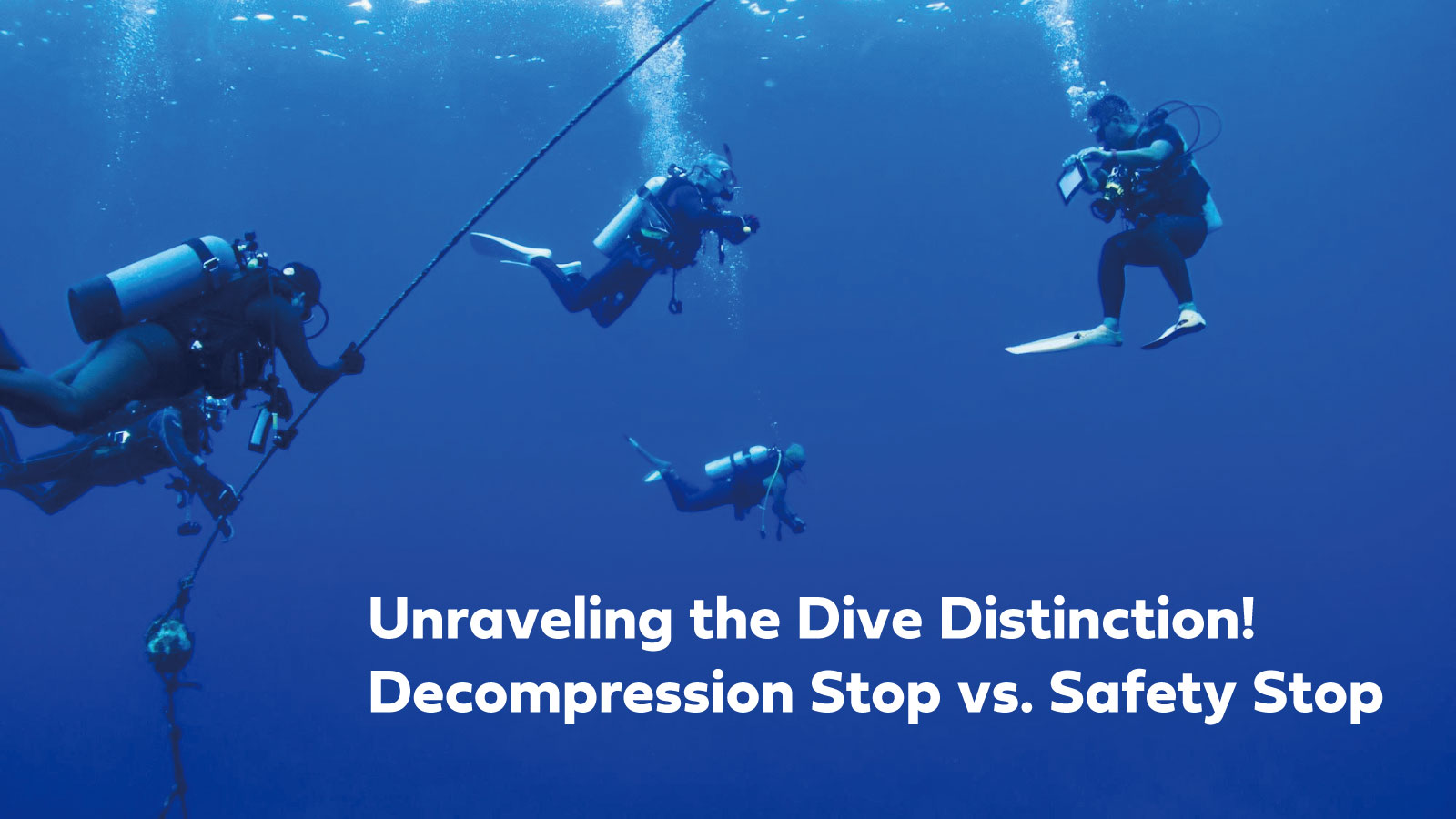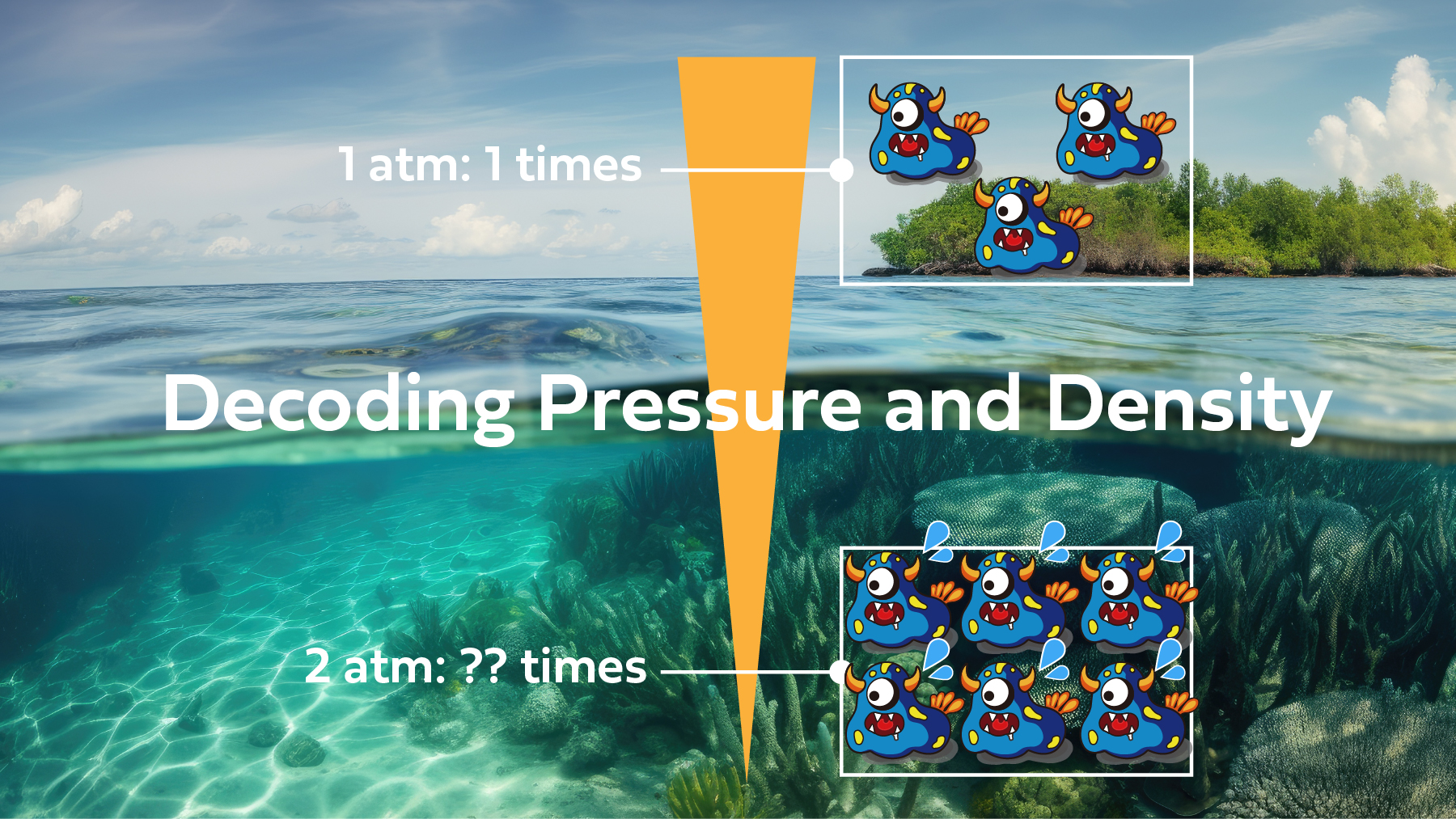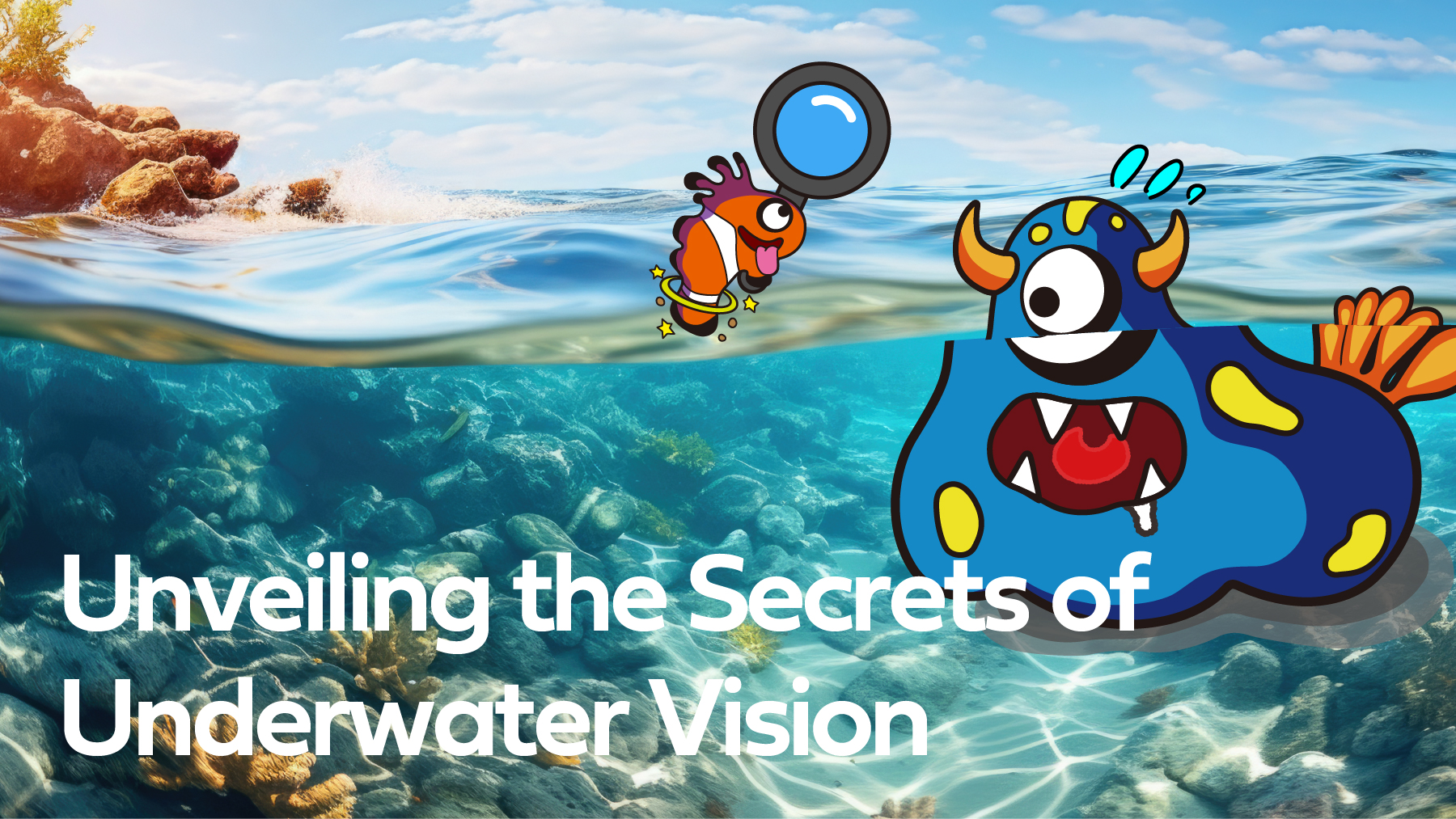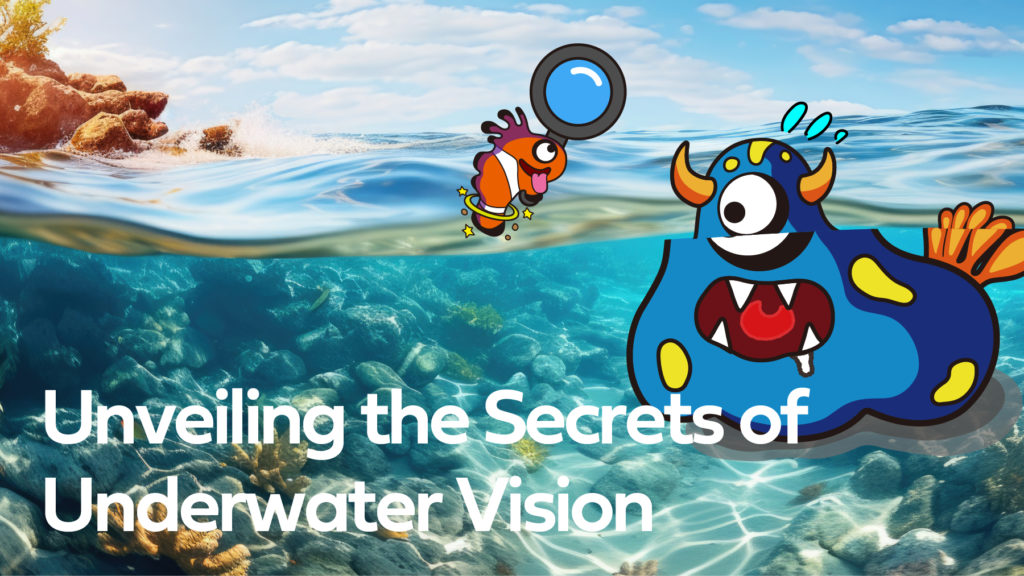
Have you ever noticed that things look bigger when you see them underwater?
Imagine you are at a cool café. When you’re given a glass of water with a straw, you might observe that the part of the straw submerged in water looks larger than the part above the water.
Another example is when you’re in a pool and your lower body or others’ lower bodies appear bigger. It feels like an illusion as if they are disconnected from the upper halves.
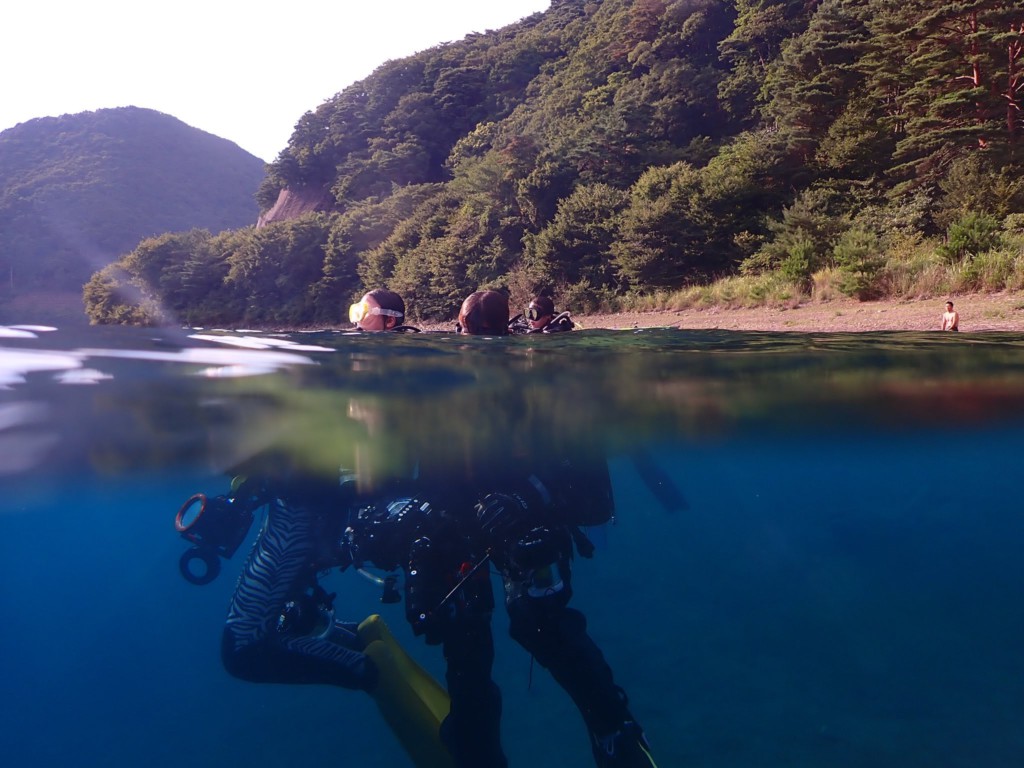
In short, when you look at objects underwater, they seem about 1.3 times (4/3 times) bigger than when you see them in the air.
Additionally, objects in the water also appear closer. It is about 0.75 times (3/4 times) the actual distance, making them seem nearer than they are.
Why is this happening?
This happens because of the way light behaves in water. It is causing a visual effect known as refraction!
In this article, get ready to dive deep into the captivating science behind the mesmerizing visual changes that occur underwater!
It is not the object itself but rather the light it reflects.
When we “see” something, we are recognizing the light that bounces off the object and enters our eyes.
This reflected light creates images in our eyes. Next, our brain processes these images to identify and interpret what the object is. For example, our brain will help us distinguish a sea slug from a frogfish based on the visual information received.
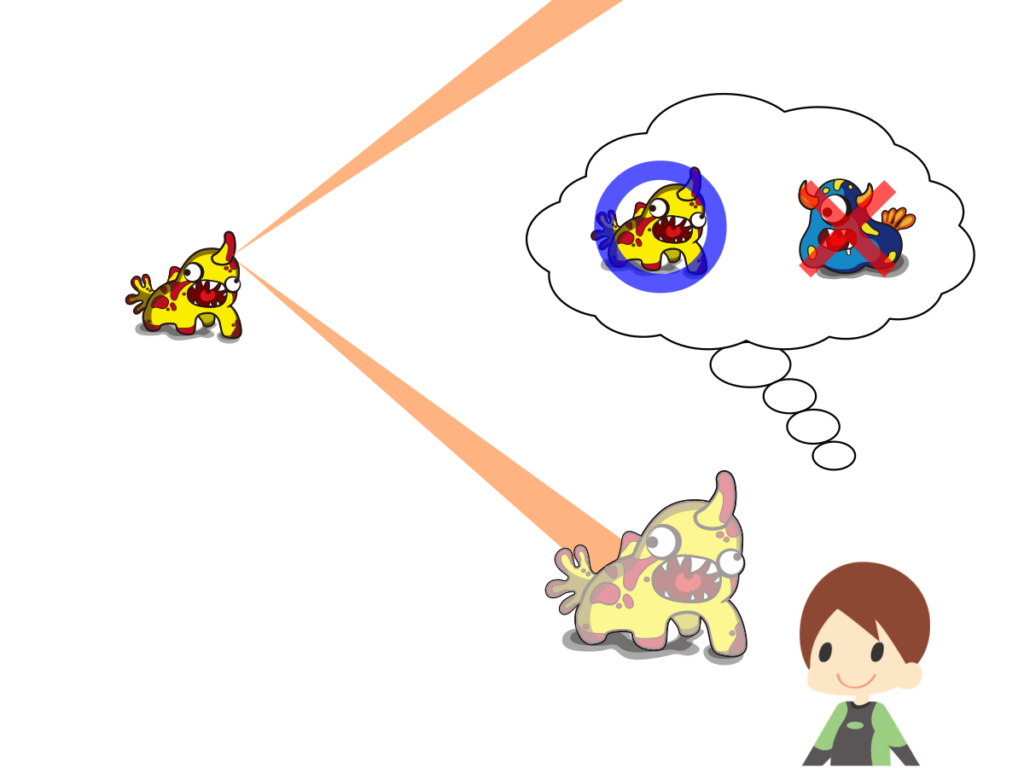
Without a lens, we cannot capture moving objects.
When it comes to vision, our eyes rely on a lens-like function to function properly.
Imagine if our eyes were missing lenses. To relate, think of a simple pinhole camera, which lacks a lens but still creates images. In this camera, light scatters off objects in all directions. But a tiny pinhole allows only one beam of light to pass through, forming an image on the screen.
This demonstrates the importance of lenses in capturing and focusing light to create clear visual images.
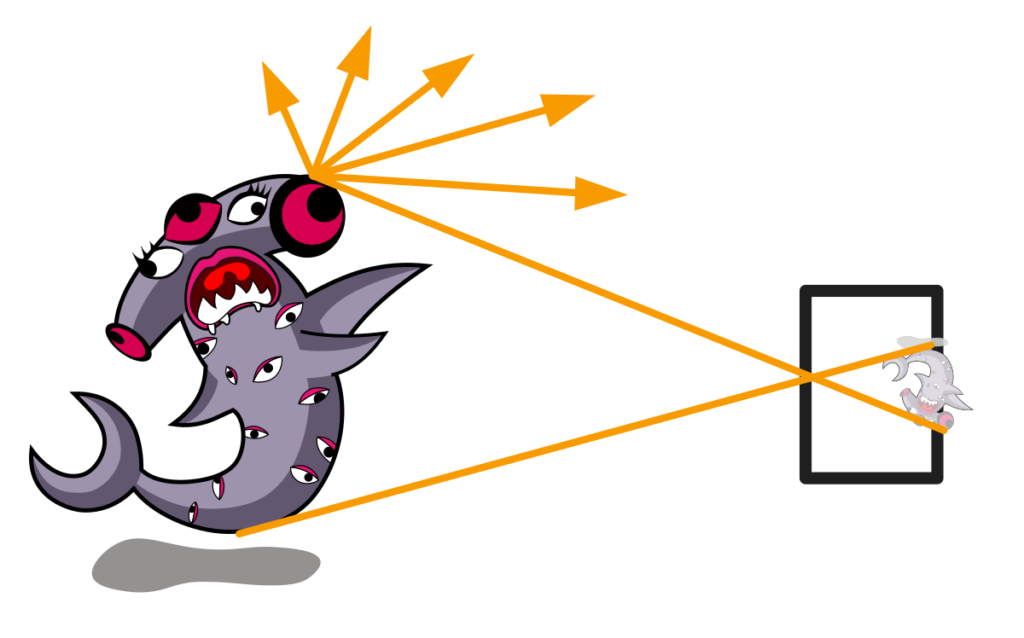
By the way, did you know that the eyes of simple organisms like planarians have a structure like a pinhole camera?
The human eye also seems to work fine with this mechanism, but pinhole cameras have significant drawbacks. Due to its limited light-gathering ability, it cannot produce clear images quickly, unlike a regular camera.
A typical camera can capture sharp images in just a fraction of a second. It is ranging from a few hundredths to a few tenths of a second. But, with a pinhole camera, it requires several seconds of exposure to gather enough light.
Imagine having to stare at something for several seconds just to see it. It would be a nightmare in everyday life. Furthermore, it cannot handle moving objects. Thus, it’s not suitable for capturing fast-paced scenes.
With the presence of lenses, the light-receiving area is increased compared to a pinhole. This allows lenses to gather much more light. It is making it possible to capture clear and detailed images of moving objects without any problem.
Light bends
Now, why can lenses capture moving objects so clearly?
The key lies in the fact that lenses can bend light.
Though we may rarely realize it, light travels incredibly fast. Did you know that light can move around the Earth approximately 7.5 times in one second? That’s about 186,282 miles per second (300,000 km).
But this speed is specific to light traveling through a vacuum.
When light passes through different substances like air, water, or glass, its speed changes. It’s like how our walking speed alters depending on whether we walk on a smooth road or a sandy beach. Different environments influence the speed of light.
In essence, it’s like adjusting our walking pace according to the surface we walk on. Lenses change the path of light, enabling them to capture moving objects with clarity and sharpness.
【Interesting Fact】
The Invariance of Light’s Speed – The Principle of Constant Light Velocity
By the way, there is a fascinating principle known as the “invariance of the speed of light”. It can lead to misunderstandings about the speed of light always being constant. But this principle only applies to light traveling through a vacuum.
The fascinating thing about the invariance of the speed of light is that it always stays the same in a vacuum, no matter how fast the observer is moving.
When we measure the speed of a car traveling at 62 miles per hour (100 km/h) while standing on the roadside, the speed gun will say 62 mph. But, if we measure the speed of a car moving in the opposite direction at 62 mph while we are also traveling at 62 mph, the speed gun will show a combined speed of 124 mph (200 km/h).
When it comes to light traveling through a vacuum, simple additive measurements like this do not apply. No matter how fast or in which direction light is measured, its speed remains constant at approximately 186,282 miles per second (300,000 km/s).
It might be a bit challenging to grasp, but this principle served as the foundation for Einstein’s theory of relativity. It explains a multitude of physical phenomena.
According to the theory, traveling at speeds close to that of light would cause time to slow down around the traveler. So, while only a year has passed for the traveler, three years might have passed for the rest of the world. It is a fascinating concept, even though it remains theoretical.
In fact, astronauts experience a slight time dilation effect when they return from space missions. After spending over two years on the International Space Station, they end up experiencing a time shift of about 1/50th of a second. It’s mind-bending!
Let’s refocus on our main topic now.
In this article, we won’t be exploring light in a vacuum or delving into the theory of relativity or time travel.
Instead, let’s consider how light’s speed changes depending on its path. this will lead to its bending.
The reason behind this change in speed lies in the wave-like nature of light. Waves adjust their speed according to the medium they travel through. This is referred to as the medium’s refractive index.
For instance, with sound waves, their speed alters based on the density and elasticity of the medium. As a result, the speed of sound is about four times faster in water compared to air.
For light, the speed is determined by the medium’s permeability (its magnetic properties) and permittivity (its ability to accumulate an electric charge). These values, permeability, and permittivity might not be familiar in our everyday lives. We will not delve further into them.
To recap, light’s speed changes as it encounters different mediums.
Now, let’s visualize this concept:
Imagine a group of people marching diagonally from a paved road towards a sandy beach. As they step onto the beach, the sand causes their walking speed to slow down.
Can you picture the group slightly veering or bending due to this change in their walking speed?
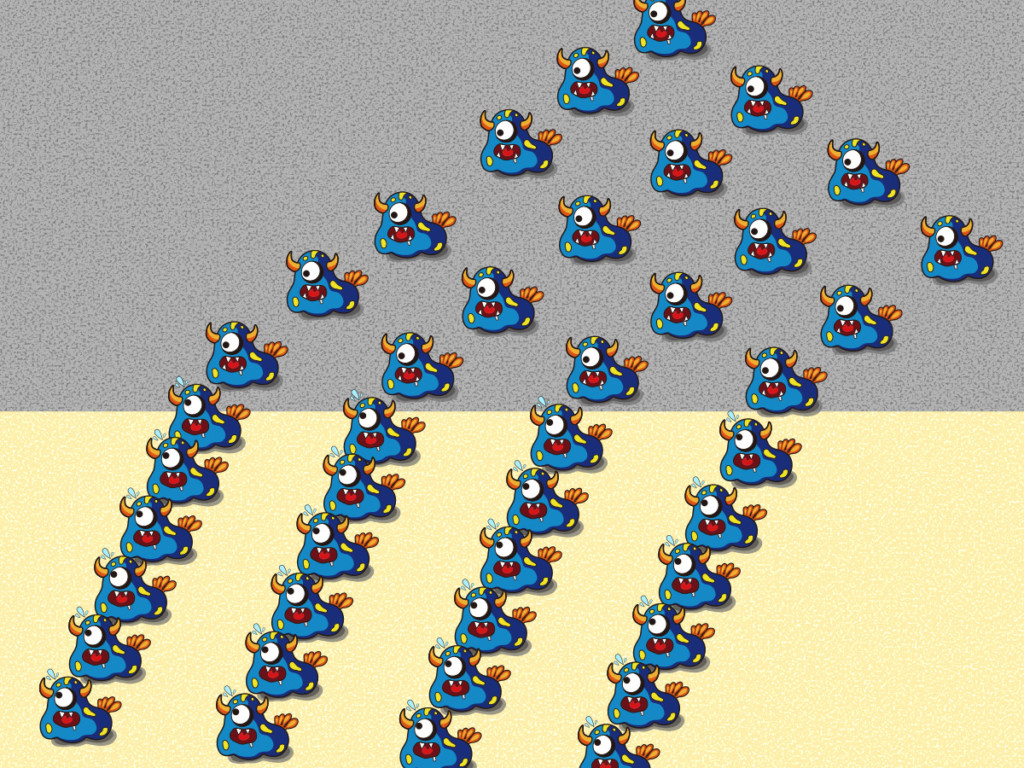
Please note that the following explanation is a simplified analogy. Hopefully, it will help explain the principle of light bending, known as refraction.
When light passes through flat glass or similar materials, it bends or refracts as it enters and exits the medium. This refraction causes the light to change direction while inside the material, but as it exits, it returns to its original direction.
Yet, in the case of lens-shaped materials, like actual lenses, the light undergoes refraction twice. Both when entering and exiting the material. The difference in angles at the boundary surfaces allows the lens to change the direction of the light.
In short, refraction occurs when light passes through different mediums. The bending of light’s path is influenced by the shape and properties of the material it encounters.

By making use of refraction, a lens can gather light from many points and converge it onto a single point.
This allows the lens to capture a clear image even with a small amount of light available in a short time. As a result, it can capture moving objects with sharpness and clarity.
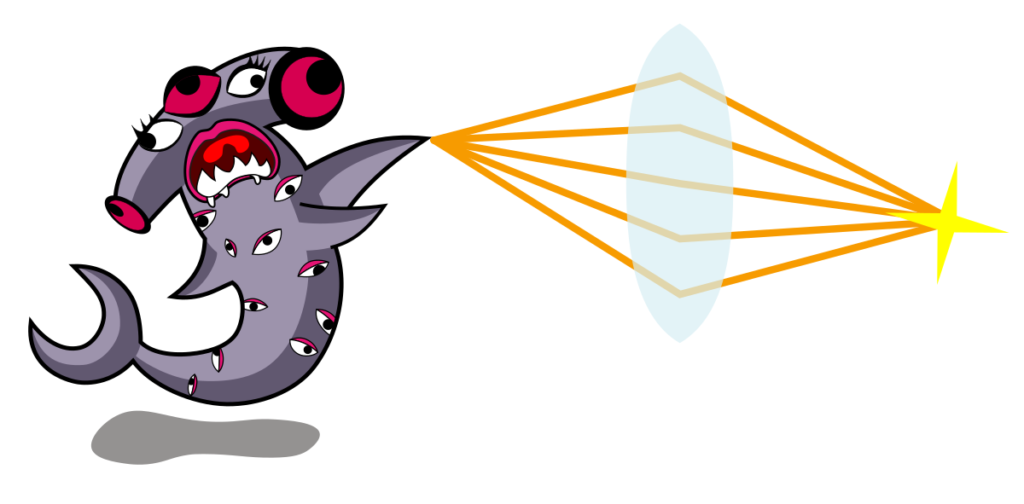
When viewing objects underwater
When looking at things underwater, refraction makes them appear about 1.3 times larger (4/3) and the distance seems about 0.75 times shorter (3/4).
When you view objects underwater, light passes through the water and then the air inside your diving mask. It is causing refraction during this transition.
As a result, the light appears to come from a closer distance, leading to the misconception that objects are larger than their actual size. This explains why objects seem bigger and closer when viewed underwater.
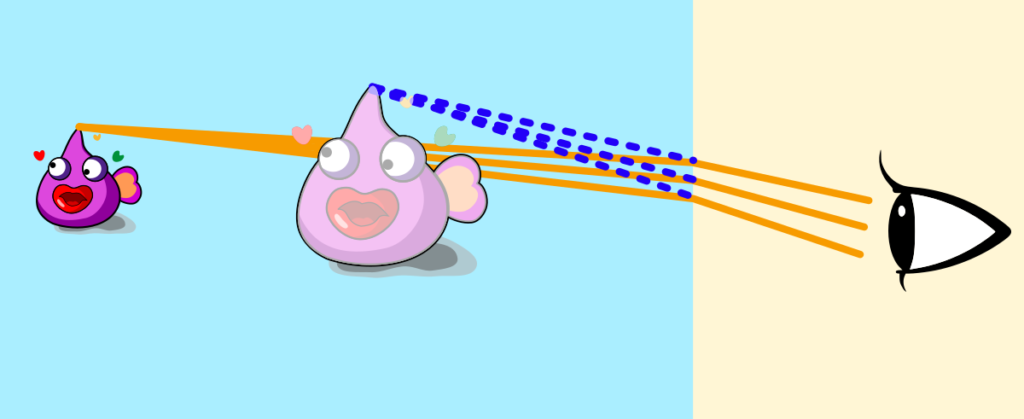
The refractive index is a value that represents how much light bends when passing through different substances. Each medium, like air, water, and glass, has its specific refractive index.
The degree of magnification corresponds to the ratio of refractive indices between the two mediums.
For example, the refractive index of air is 1.000292 (at 32℉/0℃ and 1-atmosphere pressure). The refractive index of water is 1.3334 (at 68℉/20℃). From this ratio, we can deduce that objects underwater appear 1.33 times larger (4/3 times), and the distance seems 0.75 times shorter (3/4 times).
It’s worth noting that the refractive index of air can vary with temperature and pressure. The index of water can also be affected by salinity.
But these variations are so negligible that we can disregard them in this context.
Furthermore, refraction occurs when light enters the water and when it enters the air inside the diving mask.
Even so, these refractions ultimately counteract each other. It will result in the same effect as if the light had directly traveled from water to air.
Seeing underwater without a mask or goggles
When you open your eyes underwater without using a mask or goggles, you might notice that your entire field of vision appears blurry. Refraction causes this blurriness.
The human eye is designed to rely on the refraction of light as it passes through the air before entering the eye.
Yet when light passes through water and enters the eye, there is very little refraction since water and the eye have similar refractive indices.
As a result, the images projected onto the retina, which handles recognizing visual input, are poorly focused. It is leading to the perception of blurriness.
In contrast, aquatic animals’ eyes have evolved to own refractive indices that allow them to bend light passing through water. This adaptation enables them to have clear vision and accurately perceive their surroundings.
In conclusion:
Underwater, objects may appear larger and closer than they are. This can sometimes lead to misjudging distances when attempting to reach for something like a rope right in front of you.
Still, the human brain possesses impressive adaptability. Even scuba diving beginners will find that their brain adjusts their visual perception and body movements. This will reduce the likelihood of making distance-related errors.
Yet, the brain’s corrections may not be as effective when it comes to judging the actual size of objects. So, it’s not uncommon to experience surprises when grabbing something underwater. For example, a seashell that seems large might turn out to be small once held.
By the way, it’s crucial to adhere to ethical practices and avoid touching or collecting marine life. Remember that collecting marine creatures can be considered poaching. It is a serious offense punishable by significant fines, potential imprisonment, and other legal consequences!



